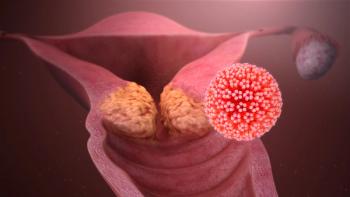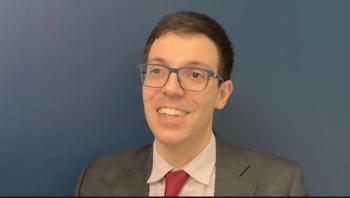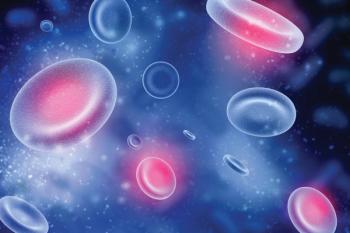
Rhenium Obisbemeda Shows No DLTs and Improves Survival in Recurrent Glioma
Patients with recurrent glioblastoma who had an absorbed dose of greater than 100 Gy with rhenium obisbemeda had a median overall survival of 17 months.
CancerNetwork® spoke with Andrew Brenner, MD, PhD, in the wake of the publication of results from the single-arm phase 1/2 ReSPECT-GBM trial (NCT01906385) evaluating rhenium obisbemeda in patients with recurrent glioma.
The median overall survival (OS) and progression-free survival (PFS) in the trial were 11 months and 4 months, respectively, and were found to correlate with the radiation absorbed dose to the tumor and the percent of tumor that was treated. When the data were dichotomized by an absorbed dose of at least 100 Gy, the median OS and PFS were 17 months and 6 months; for doses less than 100 Gy, they were 6 months and 2 months.
Brenner, a professor of medicine in the Division of Hematology and Oncology at the University of Texas Health Science Center at San Antonio, stated that the trial started with a low dose, which rose repetitively until it reached the recommended phase 2 dose—22.3 mCi and 8.8 mL. At that dose level, no dose-limiting toxicities were observed.
He also noted that as the trial was ongoing, investigators were still learning about the most optimal ways to administer the agent.
Transcript:
What we did is we started with a low dose and increased the dose repetitively until we got to the recommended phase 2 dose. We started with a small volume, basically a little under 1 mL, 0.66 mL. Then we just kept doubling and doubling and doubling the amount of radiation. We started off with a little over 1 mCi, and then we managed to go all the way up to a total of 22.3 mCi. The recommended phase 2 dose was 22.3 mCi and 8.8 mL. What we found was that there was no dose-limiting toxicity up to that level. In other words, there was nothing that looked like anything more than mild toxicity at that dose level. We got good distribution. When we looked at the overall safety profile, it was very reasonable. Patients mainly had injection site reactions. We do make a small incision in the scalp and a burr hole for the placement of the catheter that goes into the tumor. We used anywhere from 1 to 5 catheters, going up in the number of catheters as we moved up in the study to administer larger doses. There was usually some local discomfort associated with the catheters themselves but not any significant treatment-related toxicities that were particularly increased as opposed to what you would see for the typical disease. What we found was that there were higher and higher absorbed doses as we went up, and in the first few cohorts, it remained [at] 100 to 200 Gy. In the final cohorts, cohort 5 and cohort 6, we were seeing absorbed doses that were in the range of 250 to 450 Gy. To put that into perspective, when you use external beam radiation in the recurrent setting, we typically only give 30 Gy. When we treat in the newly diagnosed setting, we give up to 60 Gy. We were achieving 5 to 10 times the absorbed dose without significant toxicity.
When we went back and looked at the activity and the survival of these patients, what we noticed is that…when we limited it to patients who had absorbed doses of greater than 100 Gy, we asked where we were successful in terms of delivering the therapy. Because one of the caveats is that we were still learning about administering it, and so in those cases where we successfully administered it by using a cutoff of 100 Gy or more, there was significantly improved survival. We saw a median OS in those patients of 17 months. Now if you look at the patients who did not get 100 Gy or more, that was less than half [of that survival]. That also matched what we know historically for glioblastoma, that in the recurrent setting, the typical survival is usually around 8.3 months. Some studies may be up to 9 months. In this case, we were seeing 17 months for those patients, suggesting that there was some efficacy in terms of achieving better survival for these patients.
Reference
Brenner AJ, Patel T, Bao A, et al. Convection enhanced delivery of rhenium (186Re) obisbemeda (186RNL) in recurrent glioma: a multicenter, single arm, phase 1 clinical trial. Nat Commun. 2025;16(1):2079. doi:10.1038/s41467-025-57263-1
Newsletter
Stay up to date on recent advances in the multidisciplinary approach to cancer.






















































































